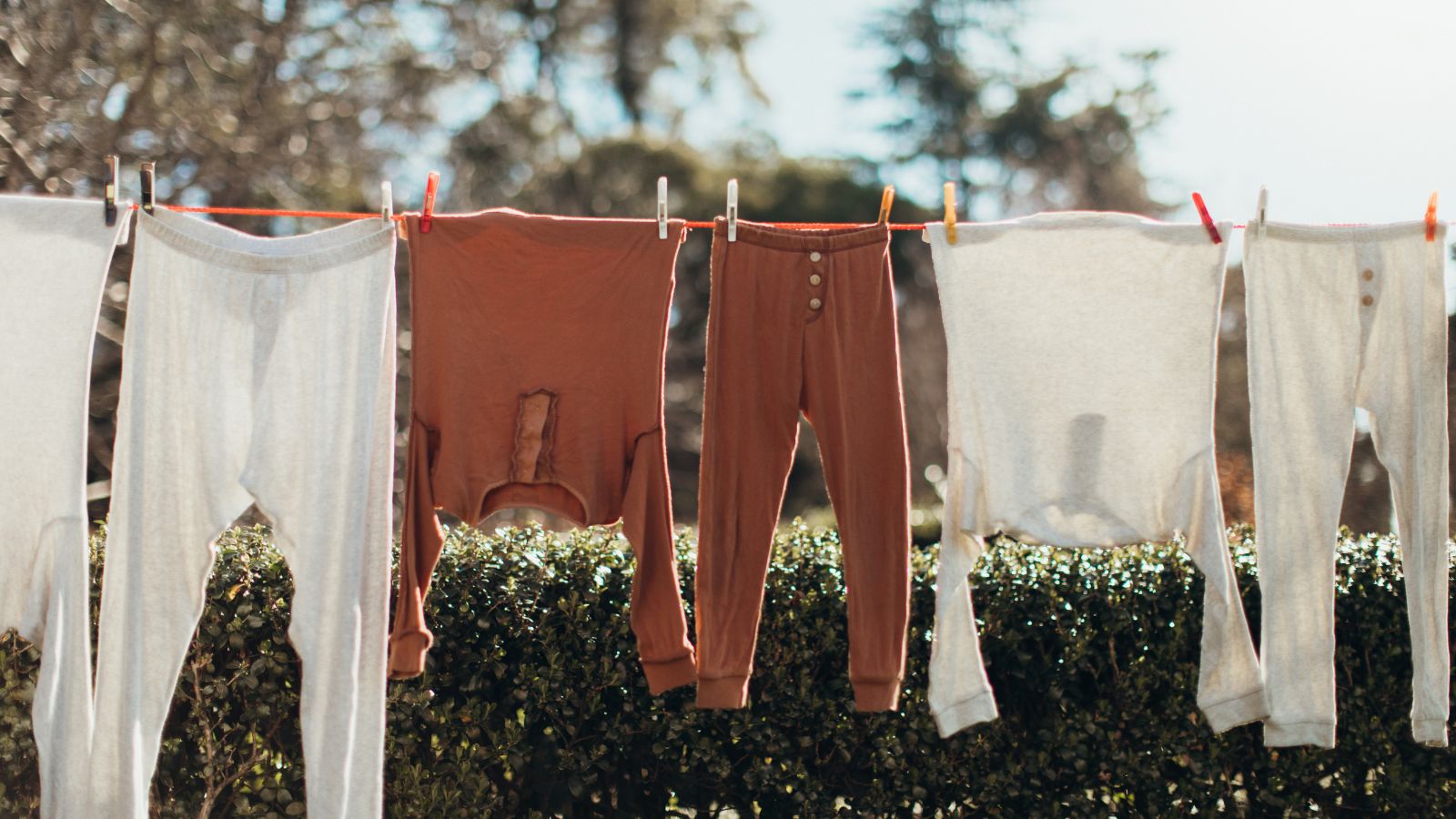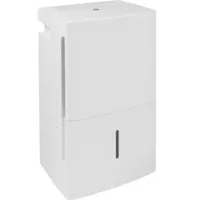The benefits of air-drying laundry – 5 reasons to rethink your tumble dryer this spring
Air-drying laundry doesn’t always equal musty smells – here’s why I'm stopped relying soley on my tumble dryer


The tumble dryer has become a standard part of most laundry routines, and it is hard to deny the convenience. That being said, they are quickly becoming a target for those of us looking to save on energy bills and be more sustainable at home.
While a tumble dryer certainly helps to dry clothes quickly and can help to make laundry smell better with dryer sheets, the cost to run a tumble dryer is rapidly increasing, putting a strain on our energy usage. As a result, I started to air-dry my laundry to help save money at home a few years ago, and what started as an occasional summer habit has now turned into a staunch routine.
These are the five benefits of air-drying laundry that made me ditch my tumble dryer for good – and why you should give it a go this spring and summer.
The benefits of air-drying laundry
While air-drying laundry is not going to save you as much time as using the best clothes dryers, the benefits far outweigh the cons in most situations. This is what I have learned in my three years of strictly air-drying after doing laundry.

1. It saves money and energy
If you are anything like me, you too will have been trying to cut energy bills over the last few years to have more money to spend on more exciting things than electricity. Learning that tumble dryers are some of the most expensive home appliances to run (even many energy-efficient models) was certainly a catalyst for me switching to air-drying laundry. After doing some math, switching to air drying only has saved me personally around $170 a year (that’s using a tumble dryer twice a week, every week).
It is not just me that this saving has an impact on. If you are keen to be more sustainable at home, then not using a tumble dryer also has a profound impact on the environment. A study by Colorado State University suggests that air-drying clothing can reduce your climate impact by up to 67%, with machine-drying clothing accounting for around 75% of laundry’s total carbon footprint. It is hard to see any downsides.
Untyo Clothes Drying Rack | View at Walmart
With great reviews, this sizeable clothes-drying rack allows you to comfortably hang out bedding to dry indoors, and hang clothing on coat hangers, making it super simple to put laundry away after drying.
2. It prolongs the life of my clothes and linens
It is no secret by now that tumble dryers are incredibly damaging to clothing. The high temperatures and general rough-and-tumble of the cycle test fabric fibers to their limits. This is why there are so many things you should not put in a dryer, such as natural fiber garments.
Design expertise in your inbox – from inspiring decorating ideas and beautiful celebrity homes to practical gardening advice and shopping round-ups.
While you might not notice an immediate difference, after three years of only air-drying and never using heat, I have noticed that clothing, linens, and towels stay softer for longer, don’t lose their shape as quickly, and maintain their color for longer too – especially when paired with a gentle laundry cycle.
I can already see how this simple swap will result in fewer replacement items over time, helping once again to save me money and reduce textile waste.
Learn about the Joseph Joseph indoor airer great for small spaces that hides in plain sight.
3. It offers a fresher, longer-lasting scent
There is a common misconception that letting laundry air-dry leaves it smelling musty or damp. When you air-dry clothing correctly, however, this is very rarely the case.
The easiest way to mitigate musty-smelling laundry is to line dry laundry outside on a warm and sunny day. The sun and gentle breeze will encourage the laundry to dry quickly while retaining the smell of your laundry detergent or fabric softener. More often than not, this ‘dried-outside’ fragrance is a lot fresher than anything you can achieve artificially through dryer sheets or using dryer balls.
The musty odor issue usually comes from drying clothes inside, such as in fall and winter. To help make laundry smell better when air-drying indoors, it helps to pick a warm, well-ventilated spot away from the kitchen so that your freshly washed clothes are not infused with the smell of last night's dinner.
Then, placing a dehumidifier beneath your clothes drying rack can help to keep dry air circulating, drying the clothes more quickly and preventing that ‘wet dog’ smell we get when wet clothing is left to sit for too long.
GE Adel 50 Pint | View at Amazon
This portable dehumidifier was rated H&G's top pick. It can remove up to 50 pints of moisture per day, making it one of the most efficient on the market.
4. It is less of a fire risk
It might just be my paranoia, but I was always a little bit worried that my tumble dryer would become a fire risk – even after cleaning out a dryer vent and regularly inspecting the drum for lint build-up. There was just something about the mix of water, fabric, and high temperatures that put me a little on edge. Given that tumble dryers are a leading cause of household fires, according to Envista Forensics, perhaps I am not alone in this.
Air-drying clothing, especially in spring and summer when I am not using a dehumidifier, limits this risk to zero, giving me peace of mind and allowing me to leave my clothes out to dry when I leave the house.
5. It forces me to put laundry away quickly
When my laundry is hung up in my yard or is on a drying rack in my home office, I have to get up and put it away before I go to bed or first thing in the morning to get it out of the way so I can work, or ensure it isn’t caught in any surprise night time showers. This means my home is far more organized and tidy in comparison to when I had a tumble dryer where I could leave clothes out of sight and out of mind for a few days.
This is a great organizing trick to make laundry easier.
FAQs
What are the negatives of air-drying clothes?
Despite the benefits, there are a few downsides to air-drying clothing. Firstly, clothes do take longer to dry which may not be practical in a busy household, or if you need a garment quickly. You also need space to be able to air-dry laundry – be it outside in a backyard to hang a clothesline, or indoors to put up a drying rack where it won’t constantly be in the way. Finally, it can sometimes limit how much laundry you can do, as you have to ensure it fits on your drying rack, rather than in a huge tumble dryer. As such, it might not be suitable for everybody, all of the time.
Does air-drying clothes inside cause dampness?
If you leave wet clothes to dry indoors in a cold space that is not well-ventilated, it can contribute to dampness in your home. If you have a warm home with good ventilation or can use a dehumidifier, then this risk is largely mitigated, however.
Air-drying laundry offers a sustainable alternative to tumble drying. While it might not work for everyone all of the time, it is a good habit to start as the weather starts to improve this spring and summer, even if you only stick to it in the warmer months.

Chiana has been at Homes & Gardens for two years and is our resident 'queen' of non-toxic living. She spends most of her time producing content for the Solved section of the website, helping readers get the most out of their homes through clever decluttering, cleaning, and tidying tips. She was named one of Fixr's top home improvement journalists in 2024.

